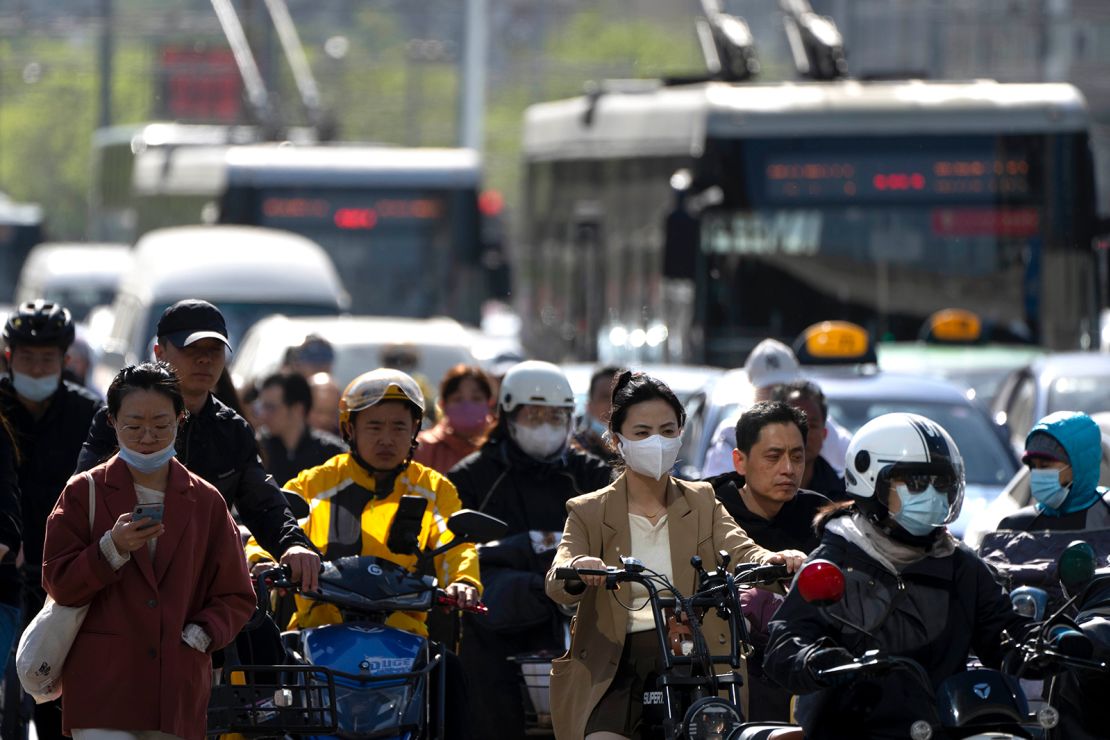Hong Kong
CNN
—
China’s economy got off to a solid start in 2023, as consumers went on a spending spree after three years of strict pandemic restrictions ended.
Gross domestic product grew by 4.5% in the first quarter from a year ago, according to the National Bureau of Statistics on Tuesday. That beat the estimate of 4% growth from a Reuters poll of economists.
But private investment barely budged and youth unemployment surged to the second highest level on record, indicating the country’s private sector employers are still wary about longer term prospects.
Consumption posted the strongest rebound. Retail sales jumped 10.6% in March from a year earlier, the highest level of growth since June 2021. In the January to March months, retail sales grew 5.8%, mainly lifted by a surge in revenue from the catering service industry.
“The combination of a steady uptick in consumer confidence as well as the still-incomplete release of pent-up demand suggest to us that the consumer-led recovery still has room to run,” said Louise Loo, China lead economist for Oxford Economics.
Industrial production also showed a steady increase. It was up 3.9% in March, compared with 2.4% in the January-to-February period. (China usually combines its economic data for January and February to account for the impact of the Lunar New Year holiday.)

Last year, GDP expanded by just 3%, badly missing the official growth target of “around 5.5%,” as Beijing’s approach to stamping out the coronavirus wreaked havoc on supply chains and hammered consumer spending.
After mass street protests gripped the country and local governments ran out of cash to pay huge Covid bills, authorities finally scrapped the zero-Covid policy in December. Following a brief period of disruption due to a Covid surge, the economy has started showing signs of recovery.
Last month, an official gauge of non-manufacturing activity jumped to its highest level in more than a decade, suggesting the country’s crucial services sector was benefiting from a resurgence in consumer spending after the end of pandemic restrictions.
As the economic recovery gains traction, investment banks and international organizations have upgraded China’s growth forecasts for this year. In its World Economic Outlook released last week, the International Monetary Fund said China is “rebounding strongly” following the reopening of its economy. The country’s GDP will grow 5.2% this year and 5.1% in 2024, it predicted.
However, some analysts believe the strong growth reported in the first quarter was the product of “backloading” of economic activity from the fourth quarter of 2022, which was weighed down by pandemic restrictions and then a chaotic reopening.
“Our core view is that China’s economy is deflationary,” said Raymond Yeung, chief economist for Greater China at ANZ Research, in a Tuesday research report.
If adjustments are made to account for the impact of delayed economic activity, GDP growth in the first quarter could have been just 2.6%, he said.
Some key data released on Tuesday support this idea. For example, private investment was extremely weak.
Fixed asset investment by the private sector increased a mere 0.6% from January to March, indicating a lack of confidence among entrepreneurs. (State-led investment, meanwhile, advanced 10%.) That’s even worse than the 0.8% growth recorded in the January-to-February period.
The Chinese government has resorted to surprising measures to restore confidence among private entrepreneurs, but the campaign has inspired more nervousness than optimism.
The all-important property industry is also mired in a deep downturn. Investment in property declined 5.8% in the first quarter. Property sales by floor area decreased by 1.8%.
“The domestic economy is recovering well, but the constraints of insufficient demand are still obvious,” said Fu Linghui, a spokesman for the NBS, at a news conference in Beijing on Tuesday. “Prices of industrial products are still falling, and enterprises are facing many difficulties in their profitability.”
Unemployment continued to surge among the youth.
The jobless rate for 16- to 24-year-olds hit 19.6% in March, up for a third straight month. It was the second highest on record, only behind the 19.9% level reached in July 2022.
The high jobless rate among the youth suggests “slack in the economy,” Yeung said.
“By June, there will be a new batch of graduates looking for jobs. The jobless condition could worsen further if China’s economic momentum falters,” he added.
China’s education ministry has previously estimated that a record 11.6 million college graduates will be looking for jobs this year.
At last month’s meeting of the National People’s Congress, the country’s rubber-stamp parliament, the government set a cautious growth plan for this year, with a GDP target of around 5% and a job creation target of 12 million.
